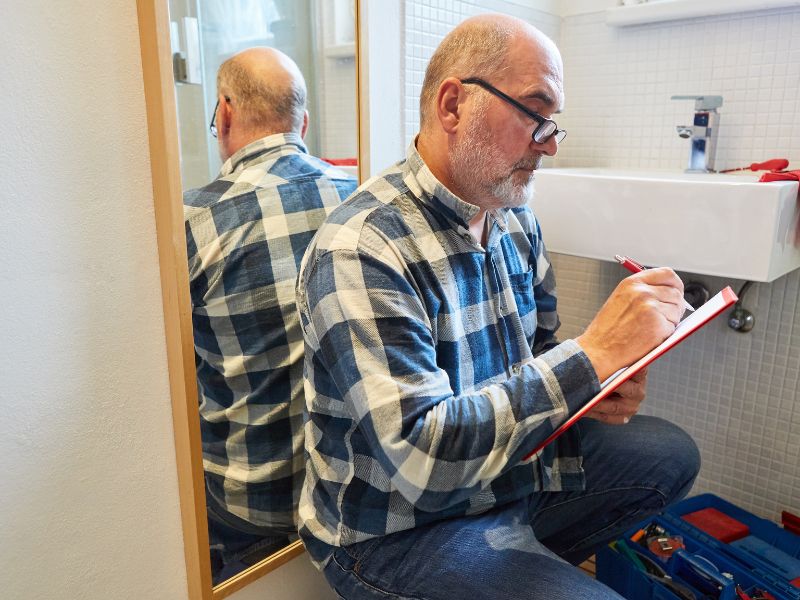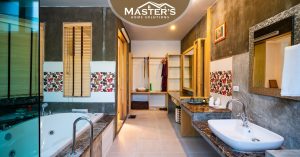
Step 1: Gather Your Tools
To get started, you’ll need a few basic tools:
- A tape measure (preferably a long one)
- A notepad and pencil
- A level
- Graph paper (optional, but helpful for visualizing)
Step 2: Measure the Overall Space
Begin by measuring the overall length and width of your bathroom. Record these dimensions carefully. It’s essential to measure in inches, as this will give you more precision when planning for fixtures like bathtubs and vanities.
Step 3: Account for Existing Fixtures
Next, measure the current fixtures. This includes the bathtub, shower, vanity, toilet, and any built-in storage. Note the size and distance of each fixture from the walls and floor. Don’t forget to measure the height of each item, especially if you plan to replace them with similar-sized fixtures.
Step 4: Windows and Doors
Measure the height, width, and depth of windows and doors, including their frames. Note which way doors open and how much space they take up. This information is crucial for avoiding layout issues later on.
Step 5: Check the Walls
Are your walls perfectly straight? Use a level to check. If there are any irregularities, make a note of them. This is particularly important for tiling and cabinetry.
Step 6: Electrical Outlets and Plumbing
Document the location of all electrical outlets, light fixtures, and plumbing lines. Changing these can be costly, so knowing where they are can help you design a layout that minimizes major plumbing or electrical work.
Step 7: Ceiling Height and Details
Measure the ceiling height and note any features like sloped ceilings or beams. These can impact where you can place fixtures and lighting.
Step 8: Create a Scale Drawing
Now, take your measurements and create a scale drawing of your bathroom. This can be done on graph paper or using a digital tool. Include all fixtures, windows, doors, and special features. This visual representation will be invaluable in planning your new layout.

Master’s Conclusion:
Measuring your bathroom accurately is the foundation of a successful renovation. It might seem tedious, but it’s the best way to ensure that your new bathroom is not only beautiful but also functional. Remember, good planning is key to turning your bathroom into a space that meets your needs and reflects your style.
Expert Tip:
If you’re unsure about any measurements or how they might impact your renovation, don’t hesitate to consult with a professional. A little expert advice can go a long way in ensuring your bathroom remodel is a success.











